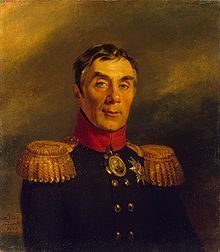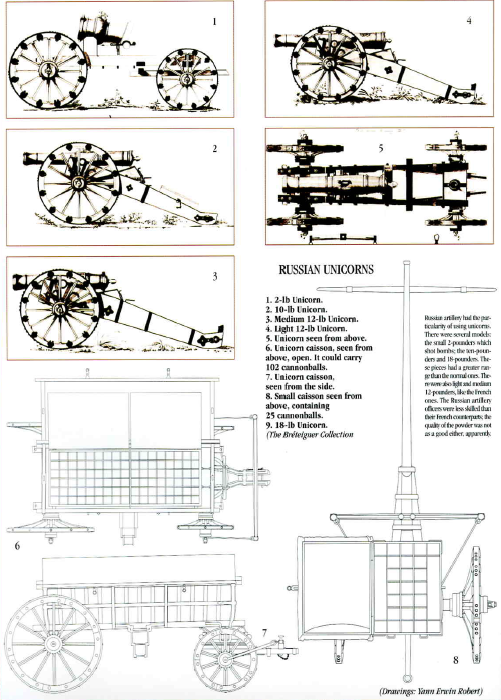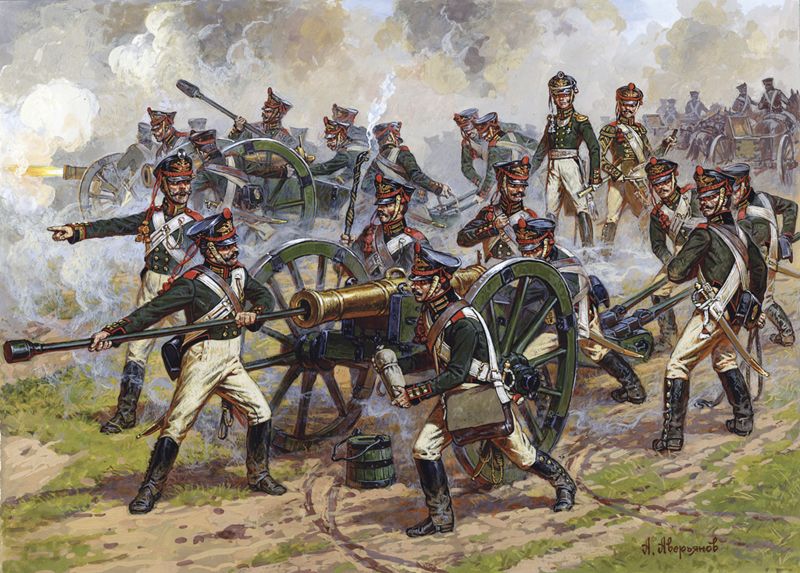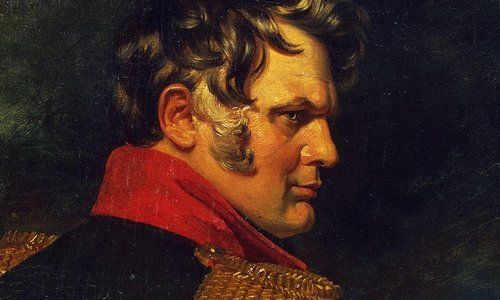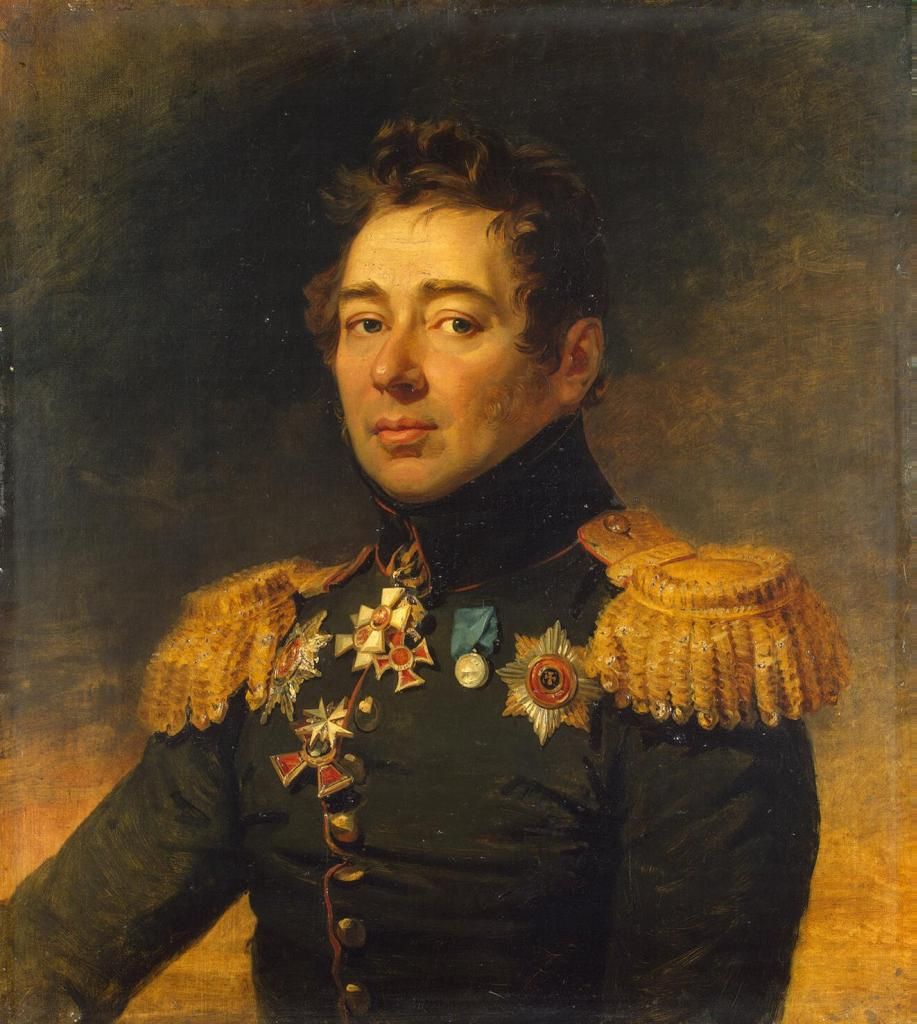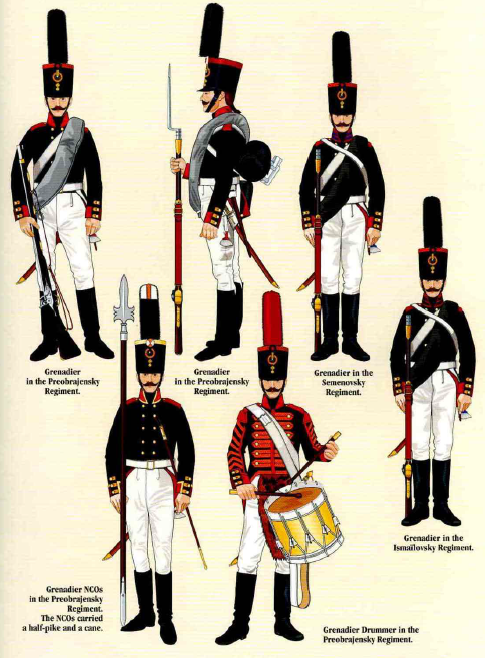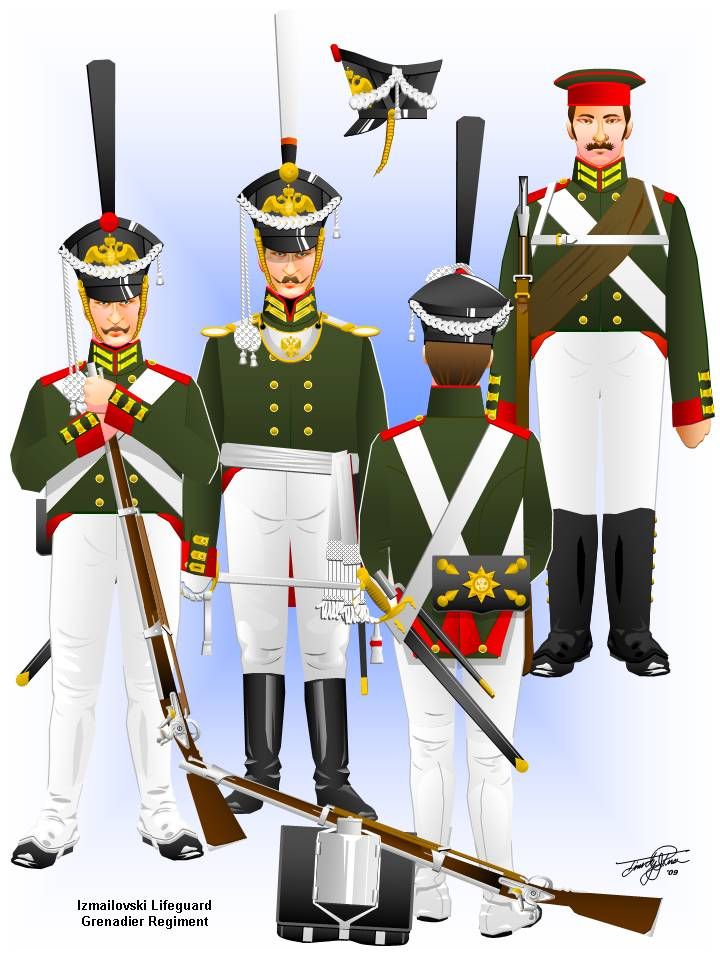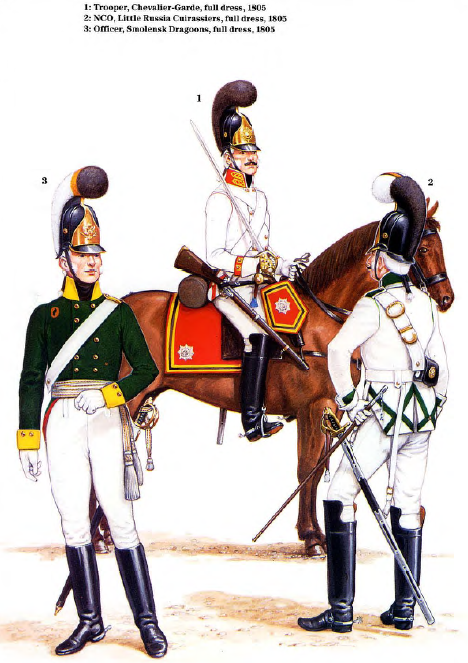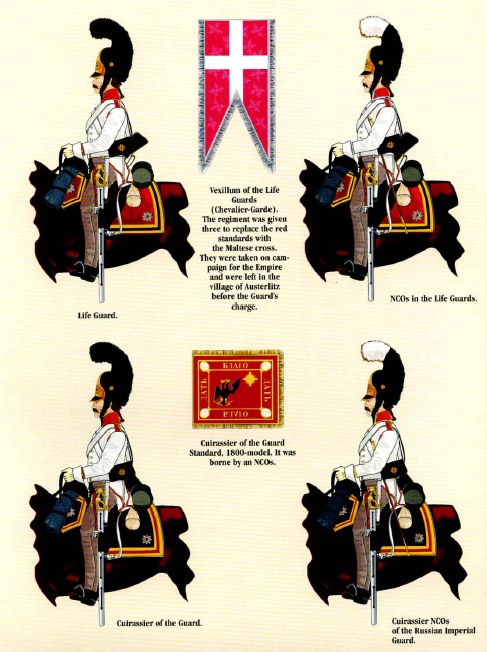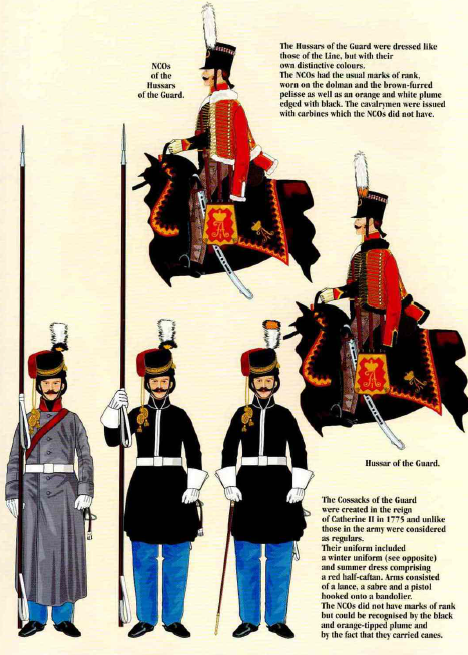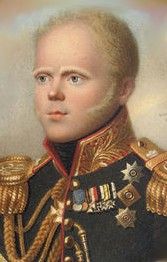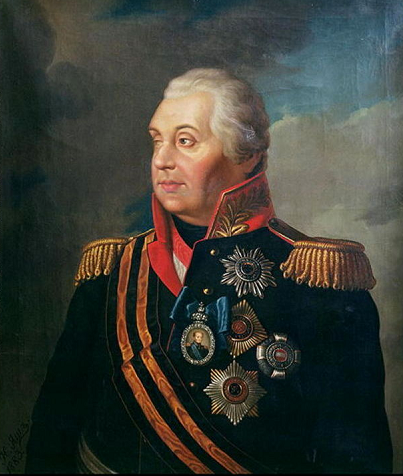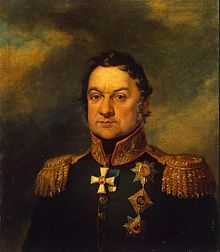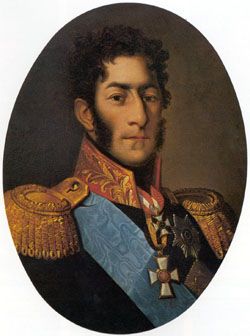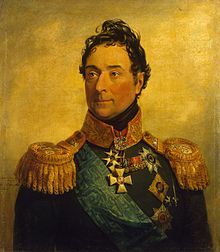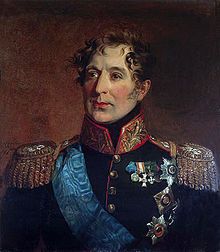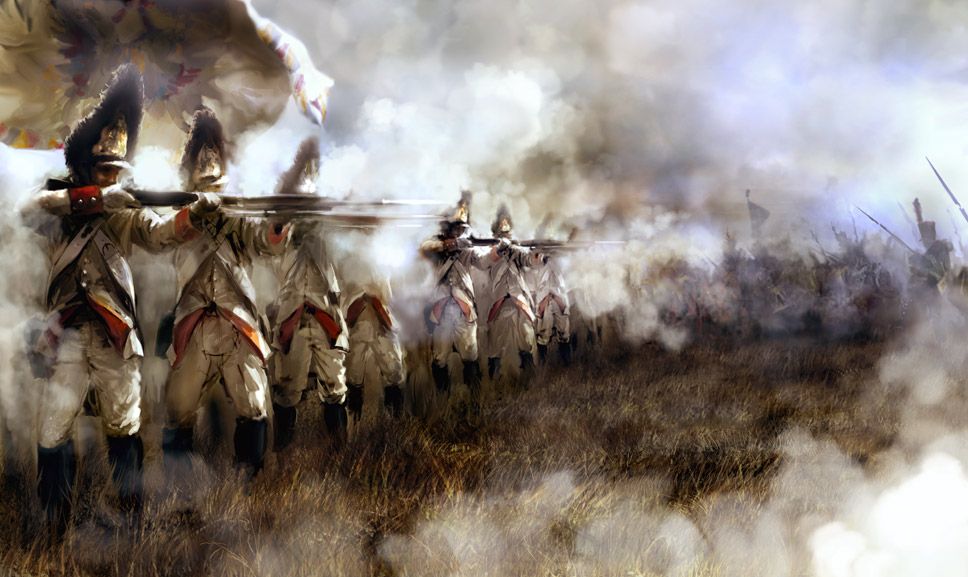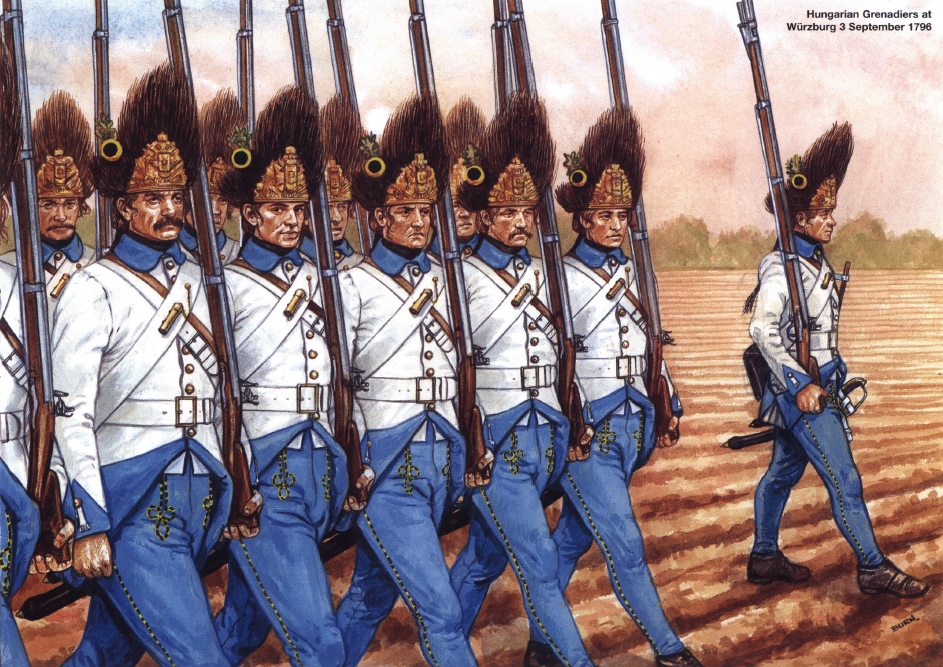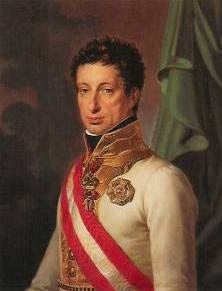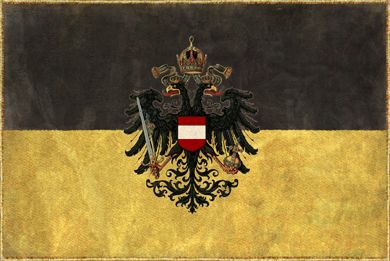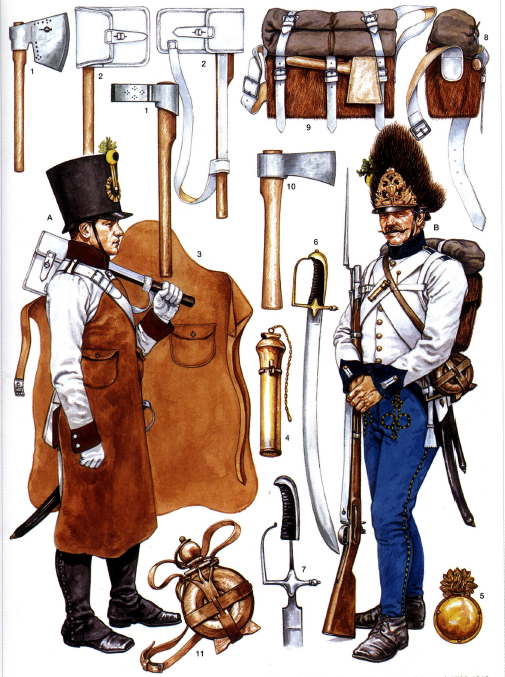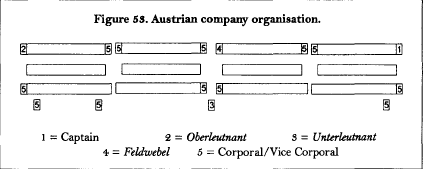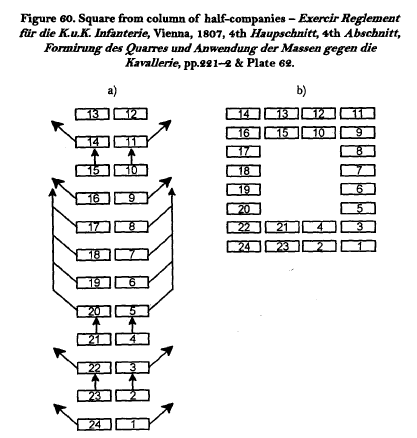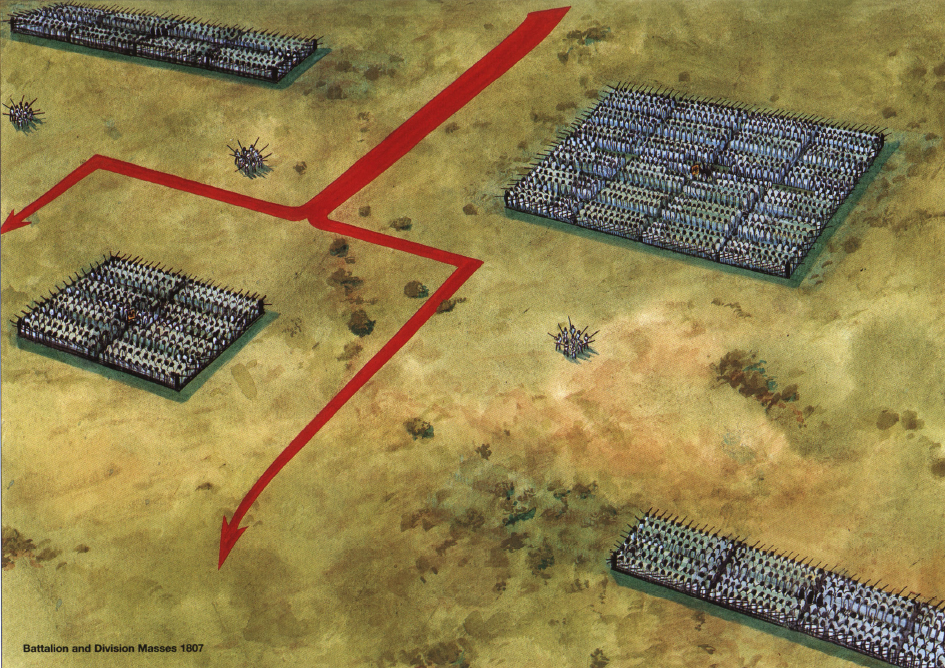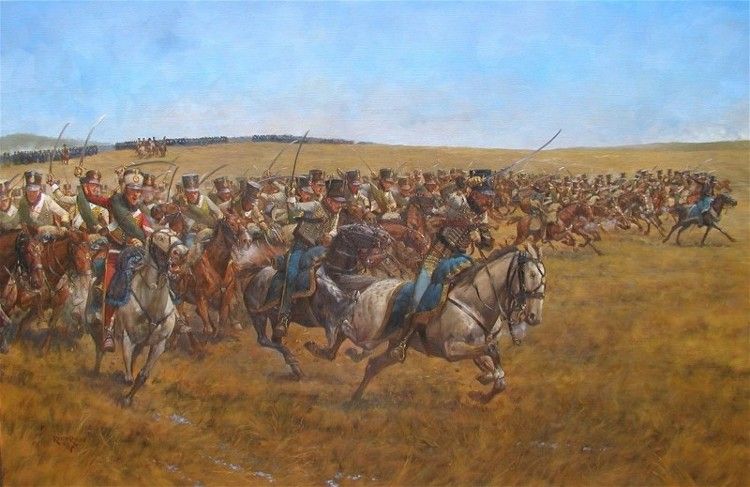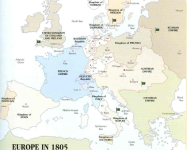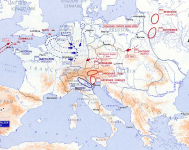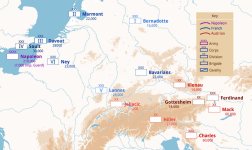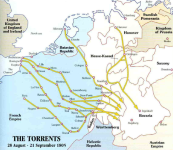Nilgiri
INT'L MOD
- Aug 4, 2015
- 25,768
- 48,116
- Country of Origin

- Country of Residence

- Thread starter
- #46
HUSSARS:
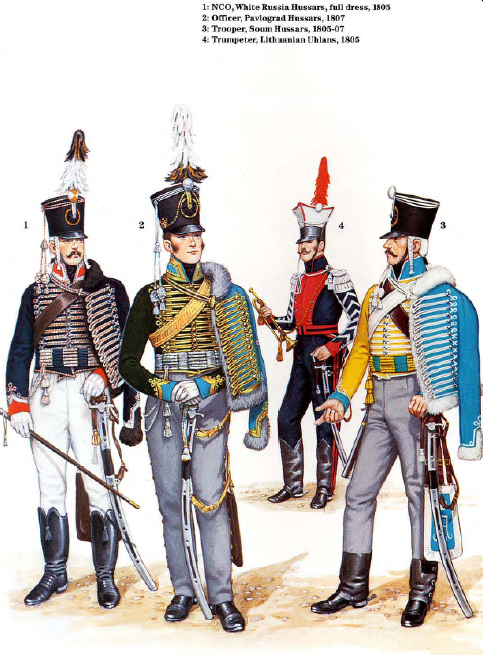
The formed the eyes andflambuoyantly dressed,hard drinking womanizers,excellent swordsmen and horsemen.Hussars ears of the army and were very popular in russia.Armed with a curved sabre,pistol and carbine they were tasked with reconssaince,screening and pursuit.The finest hussar regiments were the Loubny Hussars and the Grodno Hussars.
UHLANS:
In 1805 there was only 3 regiments of this type,they were formed of foreigners -lithuanians,poles and employed the lance as their weapon.The lance was a deadly weapon in proper hands it could outreach both the bayonet and the sword,however was useless against body armor and required skill and training to use.In any case they played no major part in this campaign.
TACTICS:

The cavalry employed the common line,column and echelon attacks discussed earlier which were common to all european cavalry of the time.
COSSACKS:
''The cossacks watch,while russian army sleeps''

(cossack left)
Russian cavalry would be incomplete without the famous (or rather infamous)cossacks.They are a group of predominantly east slavic people who became known as members of democratic, semi-militarized communities which settled in the don,dneiper and ural river basins.They fought fiercely against the poles,turks and the lithuanians After the area came under domination of the czars,they provided military service in the form of militia and irregular cavalry in lieu of taxes and autonomy.Cossacks played a key role in the expansion of russian power into siberia,caucasus and central asia.
''Cossacks are the best of all light troops that exist''- Napoleon
Cossacks were superb light cavalry,brilliant at scouting,screening,pursuit and raiding.Their weapons typically included a lance and a sabre and the occasional firearm.They fought in their unique fashion,never standing to recieve a head on charge but rather continously harssing from the flank and by raiding and wearing out the enemy.Cossacks were unsurpassed in cavalry skirmishing and ambushes.
"These organised bandits are wily. They do not like infantry fire very much,they detest artillery, but when they are three to one they become impudent."- Schwarzenberg, Austrian commander-in-chief
Their greatest use was against the supply lines of an overextended enemy.They were most effective on home soil rather than in a foreign campaign,and would be a nightmare in swarms in 1812 for the grande armee.Smaller bands occupied the russian army in its campaign in 1805.
"The French typically found the cossacks contemptible, their tactics cowardly,
their mounts ugly ... French conceit came at a cost. During the Polish campaign
a considerable number of French troopers encountered the sharp end of a cossack
lance. ... During the winter campaign in Poland, the cossacks dominated
neutral ground between armies."

The french had enormous problems dealing with them in their russian campaign.
What should one do with these horse?,
If one wants to capture them, they escape;
if one wants some rest, one is not able to drive them away;
if one forms a close formation, it is being surrounded;
if one extends its own line to the same length of theirs,
they concentrate before one realises it, and break through;
if one throws them back a hundred times, they still will return,
and our horses will be destroyed by this."
However cossacks had several limitations as well.They couldn't be counted upon to perform the duties of line cavalry.They couldn't charge formed infantry on the battlefield or hold ground against heavy cavalry.Cossacks usually never directly engaged a formed enemy squadron which would overwhelm them,they prefered to scatter it by hit and run breaking it up into groups of individuals who could be picked off.Their best use was thus strategic rather than tactical,that is more useful in campaigning rather than in the battlefield itself.
They were best employed in support of a main army.They usually came from very poor families and had a wild reputation for looting.
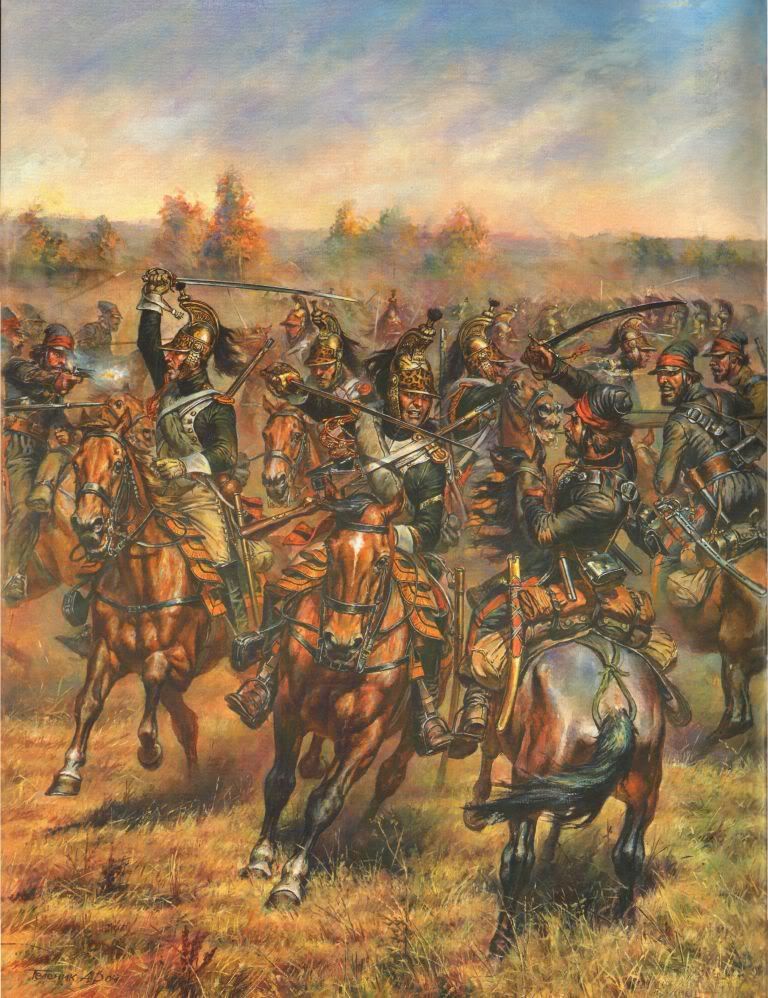
Cossacks were led by their own 'Ataman'(commanders).Platov was the greatest cossack commander and would gain immortality in the war of 1812.During the napoleonic wars the cossacks almost captured napoleon twice.
NEXT: RUSSIAN ARTILLERY

The formed the eyes andflambuoyantly dressed,hard drinking womanizers,excellent swordsmen and horsemen.Hussars ears of the army and were very popular in russia.Armed with a curved sabre,pistol and carbine they were tasked with reconssaince,screening and pursuit.The finest hussar regiments were the Loubny Hussars and the Grodno Hussars.
UHLANS:
In 1805 there was only 3 regiments of this type,they were formed of foreigners -lithuanians,poles and employed the lance as their weapon.The lance was a deadly weapon in proper hands it could outreach both the bayonet and the sword,however was useless against body armor and required skill and training to use.In any case they played no major part in this campaign.
TACTICS:

The cavalry employed the common line,column and echelon attacks discussed earlier which were common to all european cavalry of the time.
COSSACKS:
''The cossacks watch,while russian army sleeps''

(cossack left)
Russian cavalry would be incomplete without the famous (or rather infamous)cossacks.They are a group of predominantly east slavic people who became known as members of democratic, semi-militarized communities which settled in the don,dneiper and ural river basins.They fought fiercely against the poles,turks and the lithuanians After the area came under domination of the czars,they provided military service in the form of militia and irregular cavalry in lieu of taxes and autonomy.Cossacks played a key role in the expansion of russian power into siberia,caucasus and central asia.
''Cossacks are the best of all light troops that exist''- Napoleon
Cossacks were superb light cavalry,brilliant at scouting,screening,pursuit and raiding.Their weapons typically included a lance and a sabre and the occasional firearm.They fought in their unique fashion,never standing to recieve a head on charge but rather continously harssing from the flank and by raiding and wearing out the enemy.Cossacks were unsurpassed in cavalry skirmishing and ambushes.
"These organised bandits are wily. They do not like infantry fire very much,they detest artillery, but when they are three to one they become impudent."- Schwarzenberg, Austrian commander-in-chief
Their greatest use was against the supply lines of an overextended enemy.They were most effective on home soil rather than in a foreign campaign,and would be a nightmare in swarms in 1812 for the grande armee.Smaller bands occupied the russian army in its campaign in 1805.
"The French typically found the cossacks contemptible, their tactics cowardly,
their mounts ugly ... French conceit came at a cost. During the Polish campaign
a considerable number of French troopers encountered the sharp end of a cossack
lance. ... During the winter campaign in Poland, the cossacks dominated
neutral ground between armies."

The french had enormous problems dealing with them in their russian campaign.
What should one do with these horse?,
If one wants to capture them, they escape;
if one wants some rest, one is not able to drive them away;
if one forms a close formation, it is being surrounded;
if one extends its own line to the same length of theirs,
they concentrate before one realises it, and break through;
if one throws them back a hundred times, they still will return,
and our horses will be destroyed by this."
However cossacks had several limitations as well.They couldn't be counted upon to perform the duties of line cavalry.They couldn't charge formed infantry on the battlefield or hold ground against heavy cavalry.Cossacks usually never directly engaged a formed enemy squadron which would overwhelm them,they prefered to scatter it by hit and run breaking it up into groups of individuals who could be picked off.Their best use was thus strategic rather than tactical,that is more useful in campaigning rather than in the battlefield itself.
They were best employed in support of a main army.They usually came from very poor families and had a wild reputation for looting.

Cossacks were led by their own 'Ataman'(commanders).Platov was the greatest cossack commander and would gain immortality in the war of 1812.During the napoleonic wars the cossacks almost captured napoleon twice.
NEXT: RUSSIAN ARTILLERY


